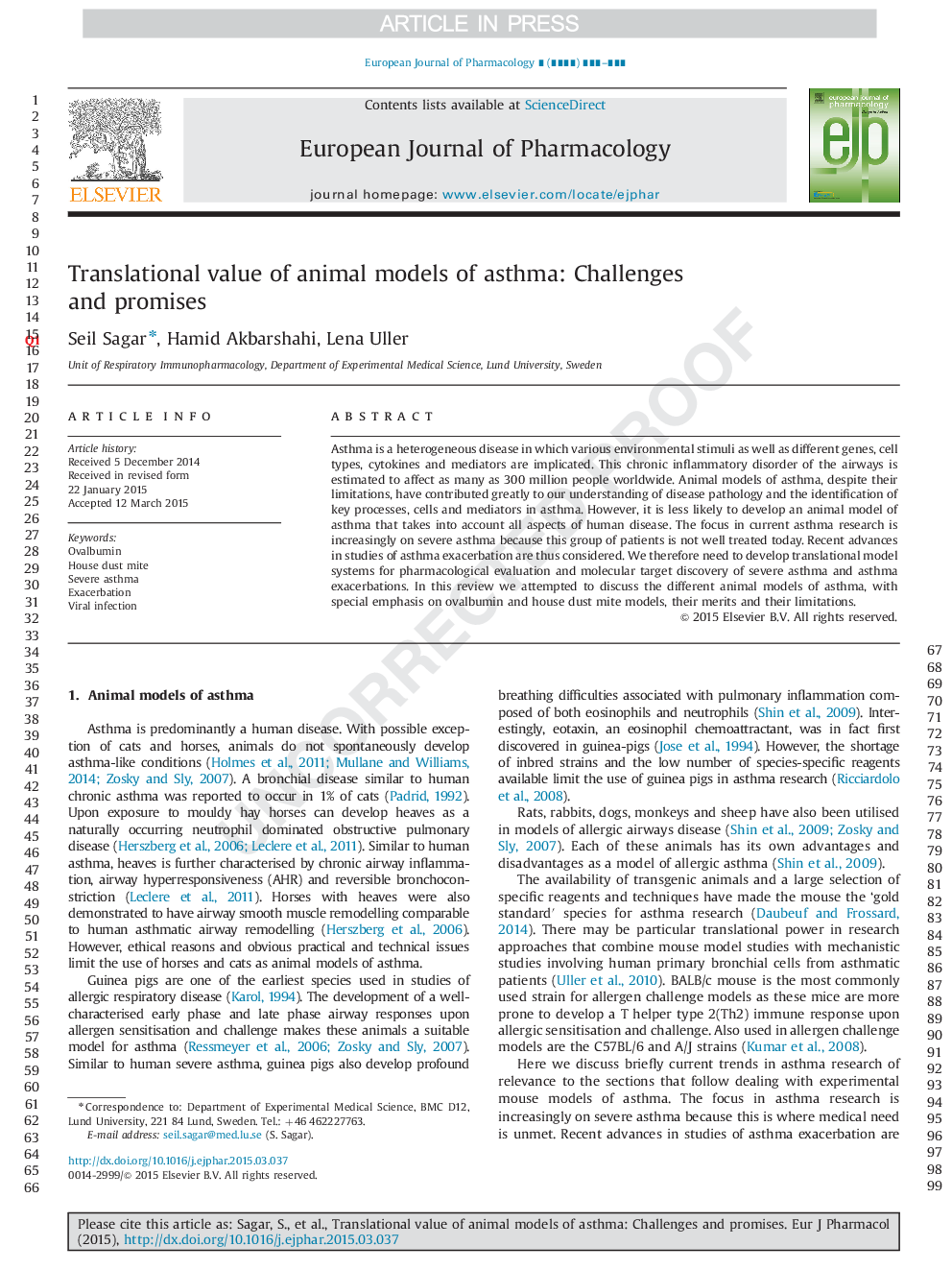| Article ID | Journal | Published Year | Pages | File Type |
|---|---|---|---|---|
| 5827321 | European Journal of Pharmacology | 2015 | 6 Pages |
Abstract
Asthma is a heterogeneous disease in which various environmental stimuli as well as different genes, cell types, cytokines and mediators are implicated. This chronic inflammatory disorder of the airways is estimated to affect as many as 300 million people worldwide. Animal models of asthma, despite their limitations, have contributed greatly to our understanding of disease pathology and the identification of key processes, cells and mediators in asthma. However, it is less likely to develop an animal model of asthma that takes into account all aspects of human disease. The focus in current asthma research is increasingly on severe asthma because this group of patients is not well treated today. Recent advances in studies of asthma exacerbation are thus considered. We therefore need to develop translational model systems for pharmacological evaluation and molecular target discovery of severe asthma and asthma exacerbations. In this review we attempted to discuss the different animal models of asthma, with special emphasis on ovalbumin and house dust mite models, their merits and their limitations.
Related Topics
Life Sciences
Neuroscience
Cellular and Molecular Neuroscience
Authors
Seil Sagar, Hamid Akbarshahi, Lena Uller,
